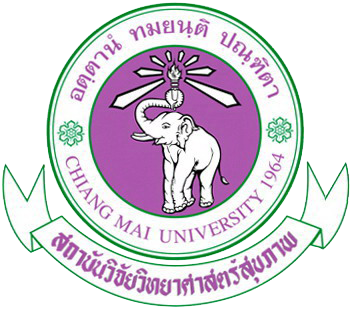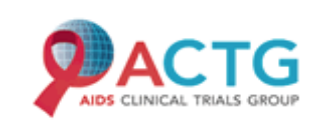Study name : Management Using the Latest Technologies in Resource-Limited Settings to
Optimize Combination Therapy After Viral Failure (MULTI- OCTAVE)
Research network (Code) : A5288
Principle investigator : Professor Khuanchai Supparatpinyo, MD
Co-PI : Dr. Patcharaphan Sugandhavesa
Collaborators :
AIDS Clinical Trial Group :ACTG Network
Funding agency :
The National Institute of Allergy and Infectious Diseases :NIAID)
Study sites:
More than 20 sites worldwide include Latin-America, Africa and Asia ( Thai and India)
Study start
Open : enrolled the first participant on 16 December 2013
Target : HIV-1-infected males and females at non-US sites, aged ≥18 years, who have experience with or resistance to NRTIs, NNRTIs, and PIs, and are currently failing a PI-containing regimen, 500 participants. For CMU HIV Treatment CRS, RIHES require 50 participants
Study design
A5288 is an open-label phase IV, prospective interventional, strategy study in resource-limited settings (RLS) for HIV-infected participants with triple-class experience or resistance to [nucleoside reverse transcriptase inhibitors (NRTIs), non-NRTIs (NNRTIs), and protease inhibitors (PIs)] and who are failing their current regimen. The use of novel agents and contemporary management tools that include standard genotyping, plasma viral load (VL) monitoring will be evaluated. The screening genotype results and antiretroviral (ARV) history will be used to allocate potential participants to one of the four cohorts and for selection of ARV regimen for each potential participant. 1 of 4 Cohort and 3 step
Step 1
Following cohort allocation, participants at sites participating in the CPI will also be randomized 1:1 to either CPI + local SOC adherence procedures OR to SOC adherence procedures only.
Step 2
Participants may change their ARV regimen (with CMC approval) after consideration of the screening and Step 1 VF genotype resistance reports and will remain on-study on Step 2 (and, as applicable, in the same randomized adherence study arm) through study completion. If there is second or subsequent confirmed VF on study, samples will be sent for batched genotyping
Step 3 (Optional)
At the end of Step 1 and Step 2 follow-up, participants taking RAL, ETR, or DRV may enter Step 3 and continue to receive these drugs through the study for up to 96 additional weeks.
Objective
1. Primary objective
To use novel agents and contemporary management tools, including standard genotyping to select an appropriate third-line regimen, interventions to improve adherence and plasma viral load (VL) monitoring, in order to achieve a ≥ 65% rate of virologic control at 48 weeks of follow-up.
2. Secondary objective
2.1 To characterize changes in HIV-1 RNA and CD4+ T-cell counts over 48 weeks and durability of responses after 48 weeks, as well as clinical outcomes (AIDS-defining and non-AIDS-defining events, hospitalizations and deaths) in four treatment groups (Cohorts A-D).
2.2 To characterize the tolerability of the regimens in four treatment groups (Cohorts A-D).
2.3 To characterize changes in metabolic outcomes including fasting lipids at 48 weeks among the regimens in four treatment groups (Cohorts A-D).
2.4 To assess the effect of a CPI+SOC compared to SOC adherence procedures on the rate of virologic control at 48 weeks of follow-up.
2.5 To determine the safety of combinations of third-line ARV therapy in terms of rates of treatment modification or discontinuation for the treatment of HIV-1 infection and to characterize drug-associated toxicities.
2.6 To compare changes in HIV-1 RNA and CD4+ T-cell counts over 48 weeks, durability of responses after 48 weeks, and clinical outcomes (AIDS-defining and non-AIDS-defining events and deaths) of CPI+SOC versus SOC adherence procedures.
2.7 To compare the tolerability of third-line regimens among participants receiving CPI+SOC versus SOC adherence procedures
2.8 In Cohort B, among participants without active hepatitis B infection, to explore whether the combination of ETR+DRV/RTV+RAL (etravirine, ritonavir-boosted darunavir, raltegravir) is associated with better virologic control, CD4+ T-cell responses, and tolerability than best available NRTIs+DRV/RTV+RAL.
2.9 To determine the prevalence at enrollment of resistance mutations detected on a population-based and minority-variant level in the four treatment groups (Cohorts A-D), and to explore prevalence by viral subtype.
2.10 To describe the mutation patterns and accumulation of mutations over time in the participants experiencing viral failure.
2.11 To evaluate the impact of predictors, including viral subtype, baseline mutations and polymorphisms occurring in gag, protease, reverse transcriptase, and integrase (IN) [detected by population-based genotyping and minority-variant analysis] on the virologic outcomes in the four treatment groups (Cohorts A-D).
2.12 To evaluate the association of adherence to the study regimens with virologic outcome.
2.13 To provide resource utilization and quality of life (QOL) data to support modeling of cost-effectiveness of ART selected using treatment history and standard genotyping as well as cost-effectiveness of the adherence intervention.
2.14 To estimate the incidence of immune reconstitution inflammatory syndrome (IRIS) and describe the clinical presentation and associated pathogens and/or inflammatory conditions.
2.15 To describe DRV excretion in breast milk.
3. Pharmacology Objectives
3.1 To determine the PK of DRV/RTV, ETR and RAL in participants in sub-cohort B2 when given together without rifabutin (RBT) (reference arm) and with RBT (test arm).
3.2 To implement dose adjustments for individual participants in sub-cohort B2 who have concentrations of ETR and RAL that are less than the specified threshold values after the addition of RBT.
3.3 To evaluate safety and tolerance of a regimen of DRV/RTV, ETR and RAL plus RBT
3.4 To evaluate RBT PK characteristics in participants in any cohort of A5288 who have RBT added to their regimen.
Significance
โครงการศึกษานี้เป็นการศึกษาหาสูตรยาต้านไวรัสสูตรที่สาม ที่เหมาะสมสำหรับผู้ป่วยติดเชื้อเอชไอวีที่ล้มเหลวในการรักษากับยาสูตรที่สอง โดยในการศึกษานี้จะมีการใช้ยาต้านไวรัสเอชไอวีตัวใหม่หลายตัว ร่วมกับการใช้เทคโนโลยีในการช่วยเรื่องวินัยในการกินยาของอาสาสมัคร โครงการการวิจัยนี้คาดหวังว่าจะได้ข้อมูลเพิ่มเติมซึ่งจะสามารถช่วยผู้ติดเชื้อเอชไอวีที่มีปัญหาดื้อยาหลายขนาน อีกทั้งอาสามัครที่เข้าร่วมโครงการ จะได้รับการรักษาด้วยสูตรยาชนิดใหม่ซึ่งอาจมีประสิทธิผลดีกว่าสูตรยาชนิดเดิมที่อาสาสมัครใช้อยู่ในปัจจุบัน อาสาสมัครได้รับการตรวจสุขภาพอย่างสม่ำเสมออย่างใกล้ชิด และได้รับทราบข้อมูลและความรู้ใหม่ ๆ ที่เกี่ยวข้องกับการติดเชื้อเอชไอวี
Progression
Open to accrual
Interesting findings
N/A
Publications
N/A
Link to project’s web site
https://clinicaltrials.gov/ct2/show/NCT01641367
https://member.actgnetwork.org/study/51838#profile=0
( user and password required)




